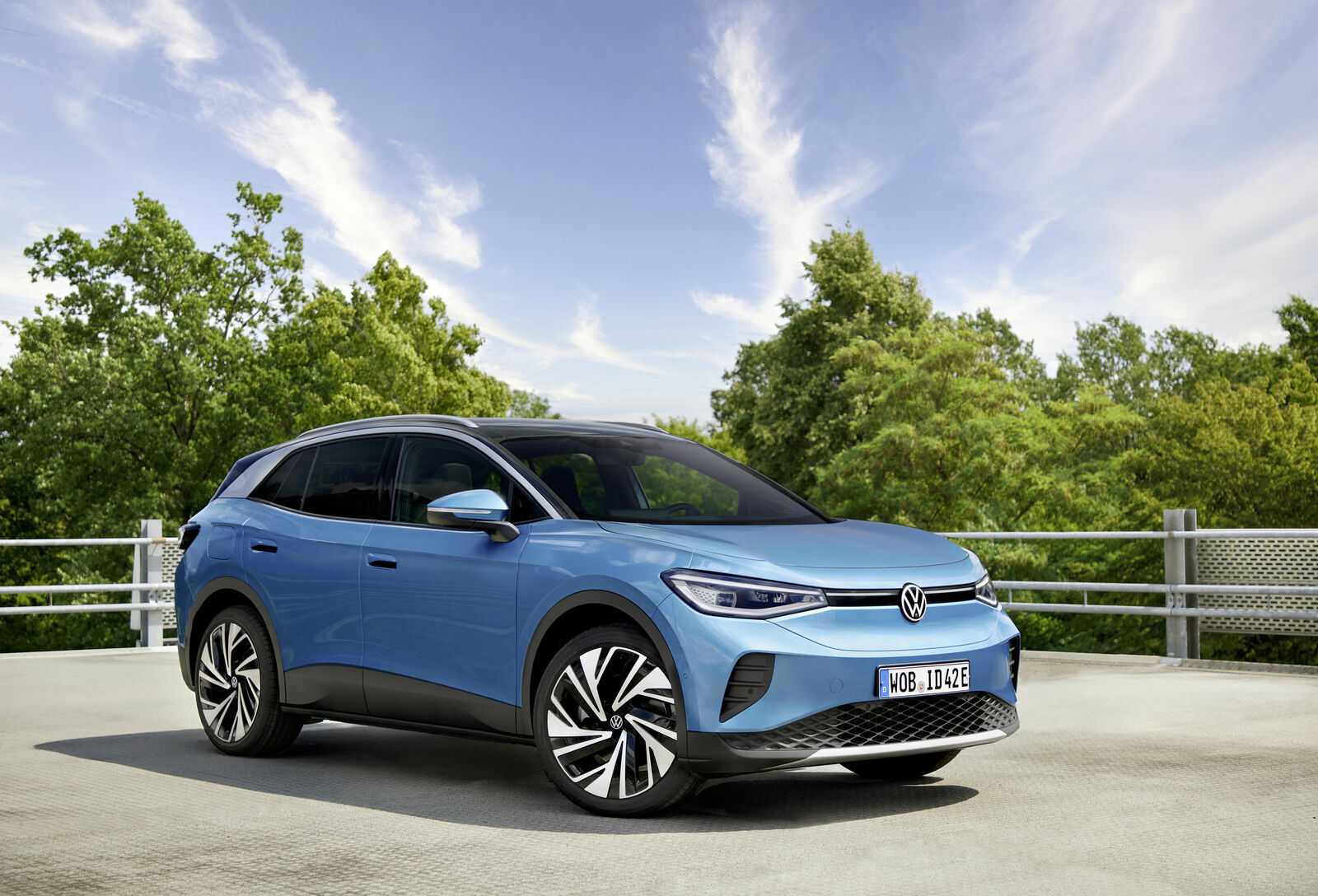As electric vehicles (EVs) become more common on roads worldwide, understanding how they perform in different climates is essential, especially for drivers in regions with harsh winters. Cold weather presents a unique challenge for EVs because the chemistry inside lithium-ion batteries slows down significantly when temperatures drop.
This slower chemical reaction leads to reduced battery capacity and power output, which directly impacts driving range and vehicle performance. For those who rely on their cars every day, range loss in winter can create inconvenience and anxiety, making it crucial to know which EV models handle cold weather effectively and which tend to lose battery charge overnight.
Beyond the battery itself, other factors also influence winter driving performance. Heating the cabin in cold temperatures requires energy, and how efficiently this is done affects the vehicle’s range. Some EVs use heat pumps, which transfer heat more efficiently and consume less energy, while others rely on resistive heating, which can drain the battery faster.
Additionally, the presence or absence of active battery thermal management systems plays a significant role. These systems help maintain the battery’s optimal temperature by actively heating or cooling the battery pack, reducing the negative effects of cold weather on battery performance. Vehicles without these systems are more vulnerable to overnight battery drain and rapid range loss.
Moreover, technological features such as remote preconditioning, which allows drivers to warm the cabin and battery while the car is plugged in, also improve cold-weather usability.
This functionality helps prevent the initial cold start penalty, where a cold battery delivers less power and reduces range until it warms up during driving. Good cabin insulation, aerodynamic design, battery size, and drivetrain layout further contribute to an EV’s winter resilience.
In this article, we’ll look closely at five EVs that stand out for their ability to survive cold winters with minimal range loss. These vehicles combine advanced thermal management, efficient heating technologies, and smart software features that enable them to maintain driving range and comfort during freezing conditions.
Following that, we will explore five EVs that are more prone to overnight battery drain and range reductions due to less effective thermal systems, older battery chemistries, and less efficient heating. This comparison will provide a clearer understanding of how different EV models manage cold climates and offer practical insights for potential buyers living in snowy and freezing regions.
By identifying which EVs perform best in winter and which tend to struggle, drivers can make more informed choices, reduce winter range anxiety, and enjoy a more reliable electric driving experience year-round.
The information presented here is drawn from manufacturer specifications, independent tests, and real-world user experiences to offer a comprehensive perspective on winter EV performance.
Also Read: 5 Volkswagens That Run Forever and 5 That Constantly Stall
5 EVs That Survive Cold Winters
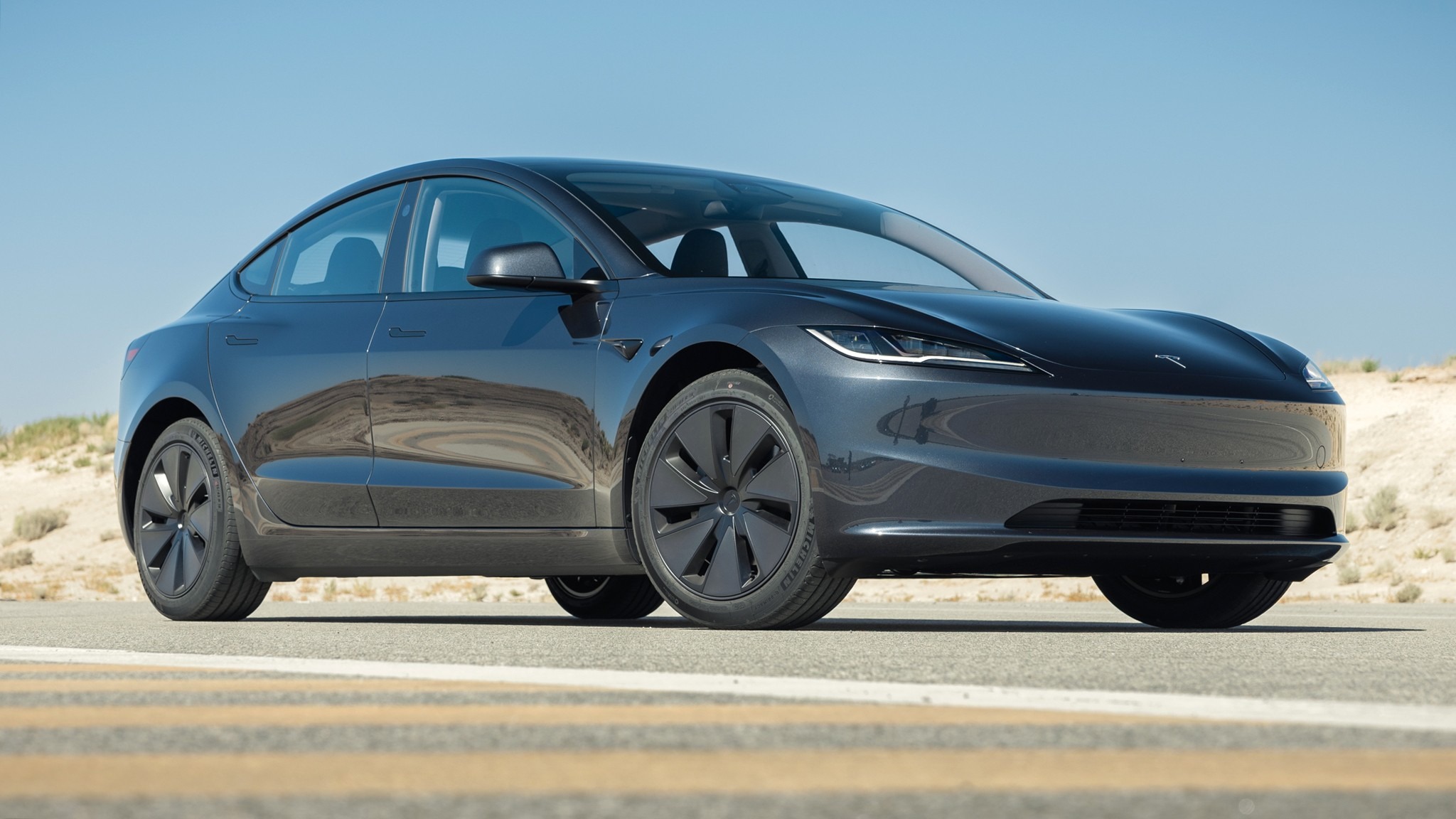
1. Tesla Model 3
The Tesla Model 3 is widely recognized for its strong battery performance and advanced technology, and it is particularly well-suited to cold-weather driving. Tesla utilizes an active liquid thermal management system that keeps the battery pack heated during cold weather and cooled when temperatures rise.
This system circulates a specially formulated coolant through channels embedded in the battery pack to maintain an optimal temperature range around 20 to 25 degrees Celsius. By actively managing battery temperature, the Model 3 significantly reduces the capacity loss commonly seen in cold conditions and maintains a more consistent driving range.
Beyond battery management, Tesla incorporates a heat pump for cabin heating. This heat pump is far more efficient than resistive heating, moving ambient heat from outside the vehicle into the cabin, requiring far less energy to maintain a comfortable interior temperature.
This efficiency translates to less battery power used for heating, which means more of the battery’s stored energy is available for driving range, even on cold days.
Tesla’s software adds another layer of sophistication by allowing users to precondition the vehicle remotely. Owners can activate cabin heating and battery warming while the vehicle is still plugged in, meaning the battery reaches its ideal operating temperature before driving begins, minimizing the cold start penalty.
This preconditioning capability has been praised by many Tesla owners living in cold regions as it prevents battery drain and enhances driving range from the moment the trip starts.
Finally, the Model 3’s all-wheel-drive variants provide improved traction on snow and ice, increasing driver confidence and safety. Combined with its efficient thermal management and cabin heating, the Model 3 stands out as one of the most reliable and comfortable electric cars to drive in harsh winter climates, making it a favorite among cold-weather EV buyers.
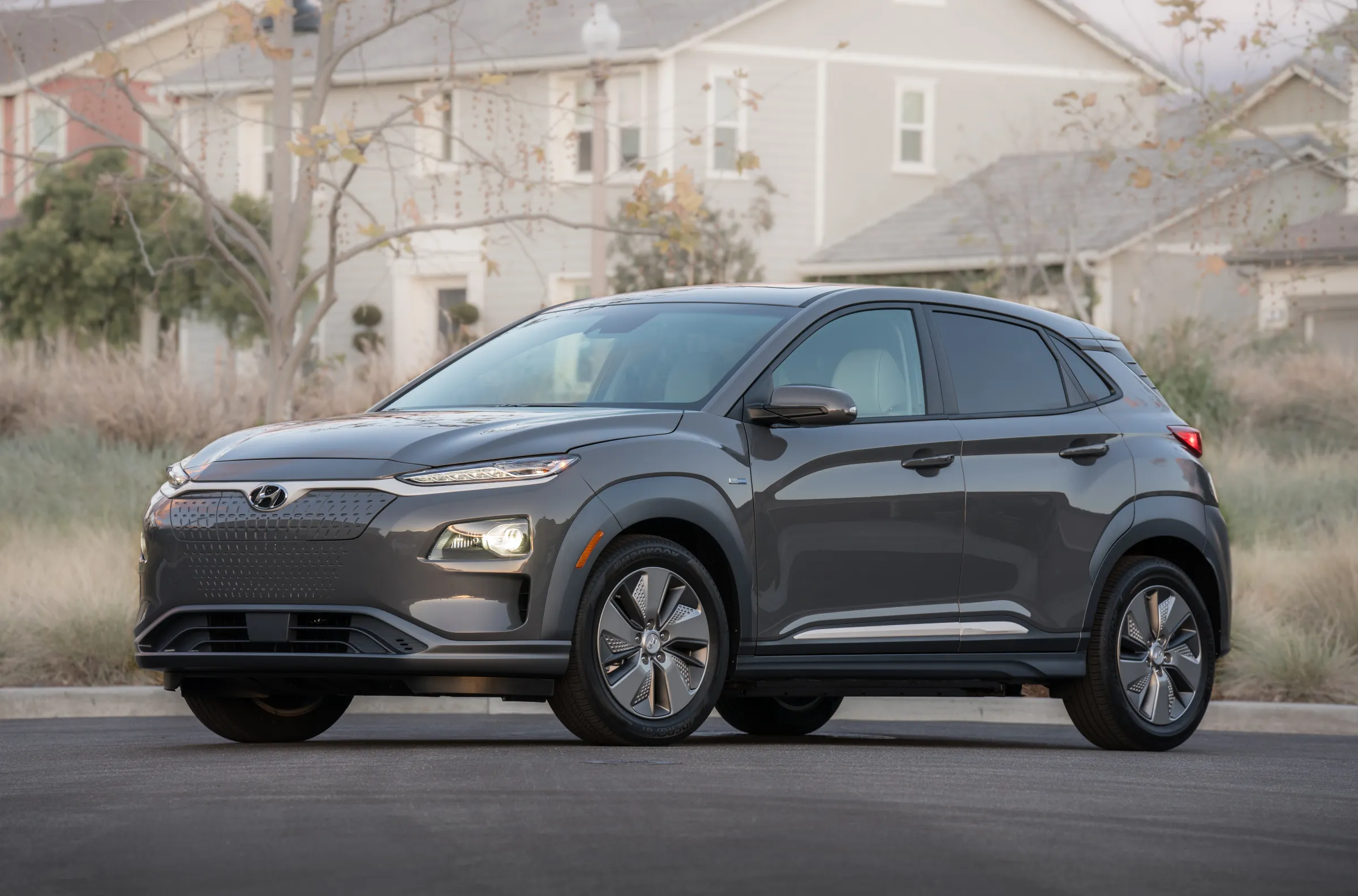
2. Hyundai Kona Electric
The Hyundai Kona Electric is a compact SUV that performs impressively well in cold weather due to its advanced battery thermal management system. Unlike some EVs that rely on passive thermal solutions, the Kona Electric uses an active liquid cooling and heating system to maintain battery temperatures within an optimal range.
This system circulates coolant fluid to rapidly warm the battery pack when temperatures drop, reducing the degradation of battery performance that can happen in freezing conditions. By doing so, the Kona Electric avoids major range penalties and prolongs battery life during the winter.
The Kona’s cabin heating is powered by an efficient heat pump system, which extracts heat from outside air, even cold air and delivers it to the cabin with minimal energy consumption. This system can reduce heating energy use by up to 50% compared to traditional resistive heaters.
Since heating the cabin in cold weather can often consume a large chunk of battery energy, the Kona’s heat pump is a significant advantage that helps preserve driving range.
In addition to its thermal management and heating efficiencies, the Kona Electric offers optional all-wheel drive, which greatly enhances traction and handling on slippery winter roads. This makes it safer and easier to drive in snow or ice, and the SUV’s higher ground clearance helps prevent getting stuck in deeper snow compared to lower-profile vehicles.
Hyundai also includes a preconditioning feature accessible via their smartphone app, allowing users to heat the battery and cabin remotely while the vehicle is plugged in. This feature minimizes energy draw from the battery during initial driving and helps maintain consistent range during winter months.
Taken together, these characteristics make the Kona Electric a top contender for drivers who need an EV that can handle cold winters without significant range loss.

3. Audi e-tron
Audi’s e-tron is a luxury electric SUV that offers both comfort and advanced technology for winter driving. It incorporates an active liquid thermal management system designed to maintain the battery at an ideal temperature regardless of external weather.
This system continuously monitors and adjusts battery temperature, heating it during cold starts and cooling it during warm conditions, ensuring consistent performance and preserving battery health.
The e-tron’s cabin heating is powered by a heat pump, which efficiently transfers heat from outside air into the cabin, reducing the electrical load placed on the battery for heating.
The vehicle’s insulation and double-glazed windows further enhance thermal efficiency by preventing heat loss. This attention to thermal management results in lower energy consumption for heating, helping preserve battery charge and extend winter driving range.
The quattro all-wheel-drive system in the e-tron provides excellent traction on snow and ice, offering better control and stability. This system distributes power dynamically between the front and rear wheels based on road conditions, enabling confident winter driving even in challenging environments.
Audi also equips the e-tron with remote preconditioning features, allowing owners to heat both the battery and cabin while plugged into a charger. This feature ensures the vehicle is ready to go with minimal range loss from the outset of a trip.
The combination of sophisticated battery management, efficient heating, and advanced drivetrain technology makes the e-tron a top choice for drivers living in regions with cold, snowy winters.
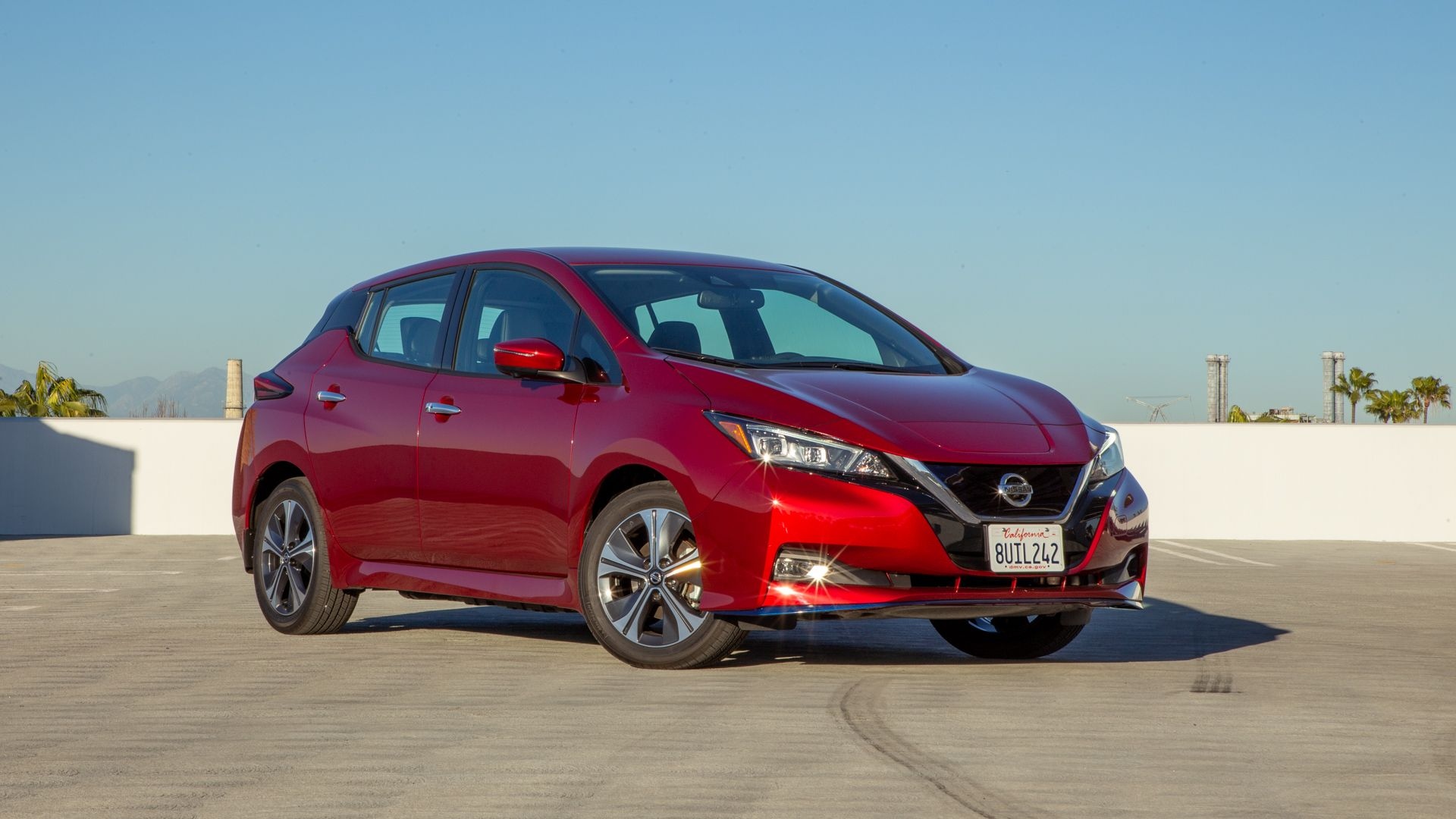
4. Nissan Leaf Plus
The Nissan Leaf Plus represents a significant improvement over earlier Leaf models, particularly in how it handles cold weather. While the original Leaf lacked active battery thermal management, the Leaf Plus incorporates a more advanced thermal system that helps protect the battery from extreme cold.
Though it does not have a full liquid thermal management system like some competitors, it uses a combination of insulation and battery warming strategies to reduce cold-weather range loss.
The Leaf Plus also uses a heat pump system for cabin heating, a upgrade from the older resistive heaters used in early Leafs. This heat pump extracts heat from outside air to warm the cabin more efficiently, reducing energy consumption and preserving driving range during cold weather.
The switch to heat pump technology was welcomed by many Leaf owners who had experienced significant range loss due to heating in previous models.
Nissan offers remote preconditioning via the Leaf app, allowing owners to warm the battery and cabin while the vehicle is plugged in. This feature minimizes the cold start penalty by ensuring the battery is already warmed when the trip begins, which is particularly beneficial during winter mornings.
The Leaf Plus’s relatively lightweight design and improved battery capacity contribute to better winter range compared to earlier versions. While some range loss in cold weather is inevitable, the Leaf Plus provides a more reliable and comfortable driving experience for those living in colder climates.
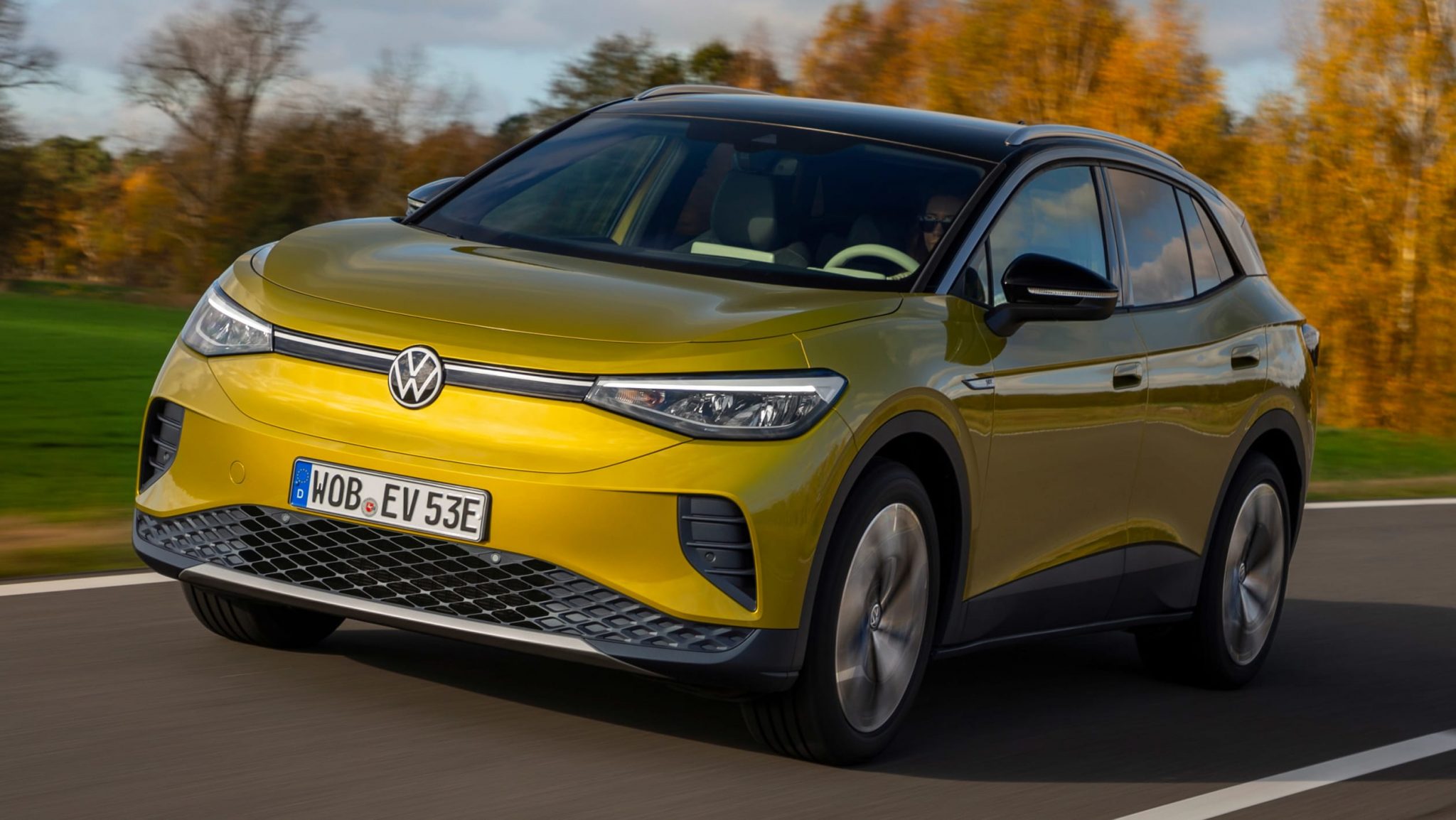
5. Volkswagen ID.4
Volkswagen’s ID.4 is designed with cold-weather performance as a priority. It features an active thermal management system that uses liquid cooling and heating to maintain battery temperature within an ideal range, minimizing the negative effects of cold on battery capacity and output. This system also helps protect battery longevity by preventing excessive temperature fluctuations during winter months.
The ID.4’s cabin heating system is based on a heat pump, which significantly reduces energy consumption compared to resistive heaters. The vehicle’s cabin insulation is optimized to retain heat, ensuring that less power is needed to keep occupants warm. This design reduces the energy drain during winter driving and helps maintain usable range.
The ID.4 also offers an all-wheel-drive option, which enhances winter traction and handling. This AWD system adjusts power delivery to improve grip on snowy or icy surfaces, increasing safety and driver confidence during cold weather. Its aerodynamic shape and moderate weight also contribute to energy efficiency across all conditions.
Volkswagen includes a remote preconditioning feature that allows drivers to warm the cabin and battery while the car is plugged in. This reduces energy consumption during driving and improves battery performance from the start of a trip. Together, these technologies make the ID.4 a well-rounded choice for those seeking an EV that can handle cold winters without severe range penalties.
5 EVs That Drain Overnight in Cold Winters
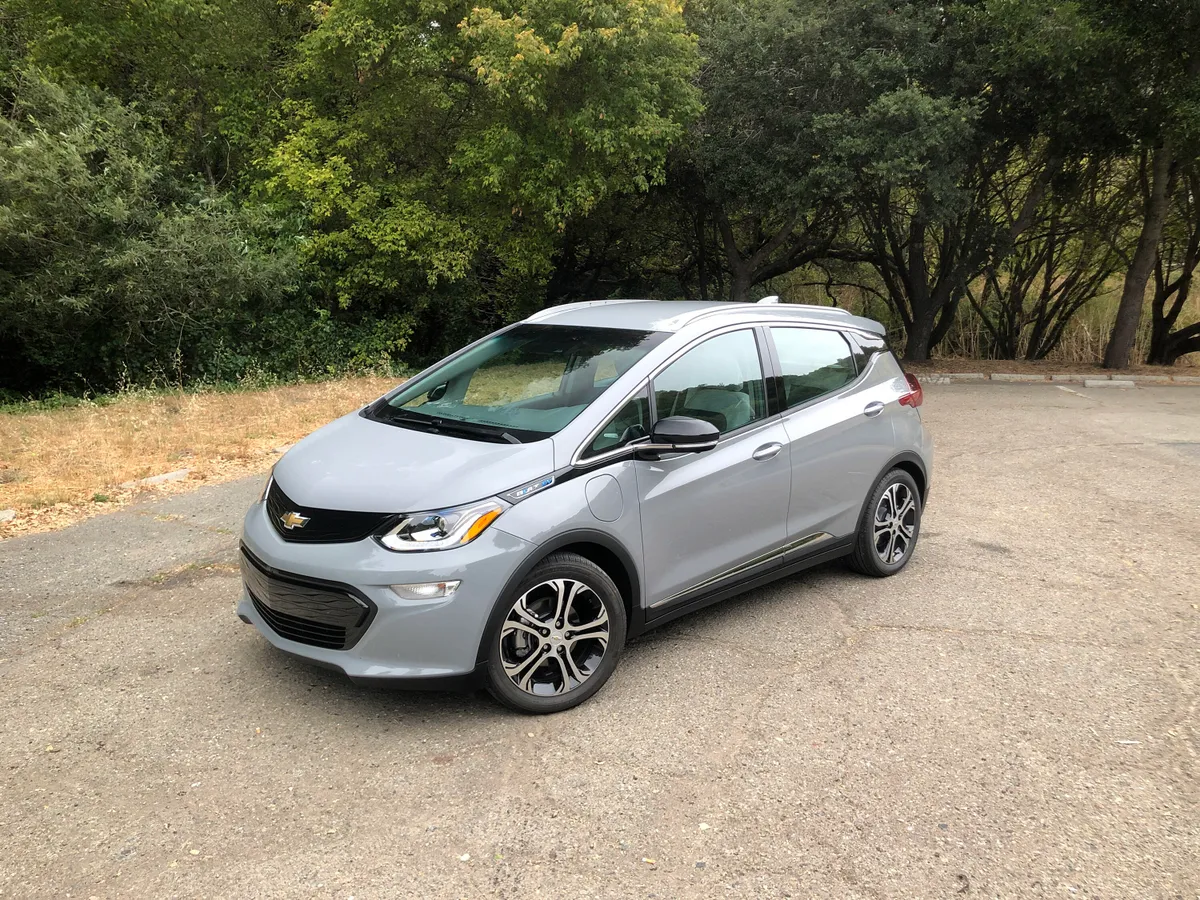
1. Chevrolet Bolt EV (Early Models)
The Chevrolet Bolt EV was an early frontrunner in the affordable electric vehicle market, but has shown limitations in cold-weather performance, particularly in its early models.
One of the key issues is the absence of an active battery thermal management system, which many newer EVs have adopted to prevent battery cooling in cold climates. Without this, the battery temperature in the Bolt drops quickly during freezing nights, leading to significant reductions in available charge by the morning.
The heating system in early Bolt models uses resistive electric heaters to warm the cabin. While these heaters can produce heat rapidly, they are inefficient and consume a large amount of battery power during cold weather. This dual challenge, cooling battery and energy-hungry heating, means the Bolt loses a considerable amount of range overnight and during winter driving.
Many Bolt owners have reported range losses upwards of 40% overnight when parked outside in freezing temperatures. This loss impacts daily usability, making it difficult to rely on the Bolt for consistent winter commutes without planning frequent charging stops. The smaller battery pack size, around 60 kWh, offers less buffer to offset cold-related losses compared to vehicles with larger battery capacities.
Further complicating cold-weather use is the lack of advanced preconditioning features in the early Bolt EVs. Without the ability to remotely warm the battery and cabin while plugged in, drivers face an initial period of lower efficiency and range reduction at the start of trips.
This cold start effect, combined with inefficient heating, places the Bolt EV at a disadvantage for cold-weather owners compared to more winter-ready EVs.
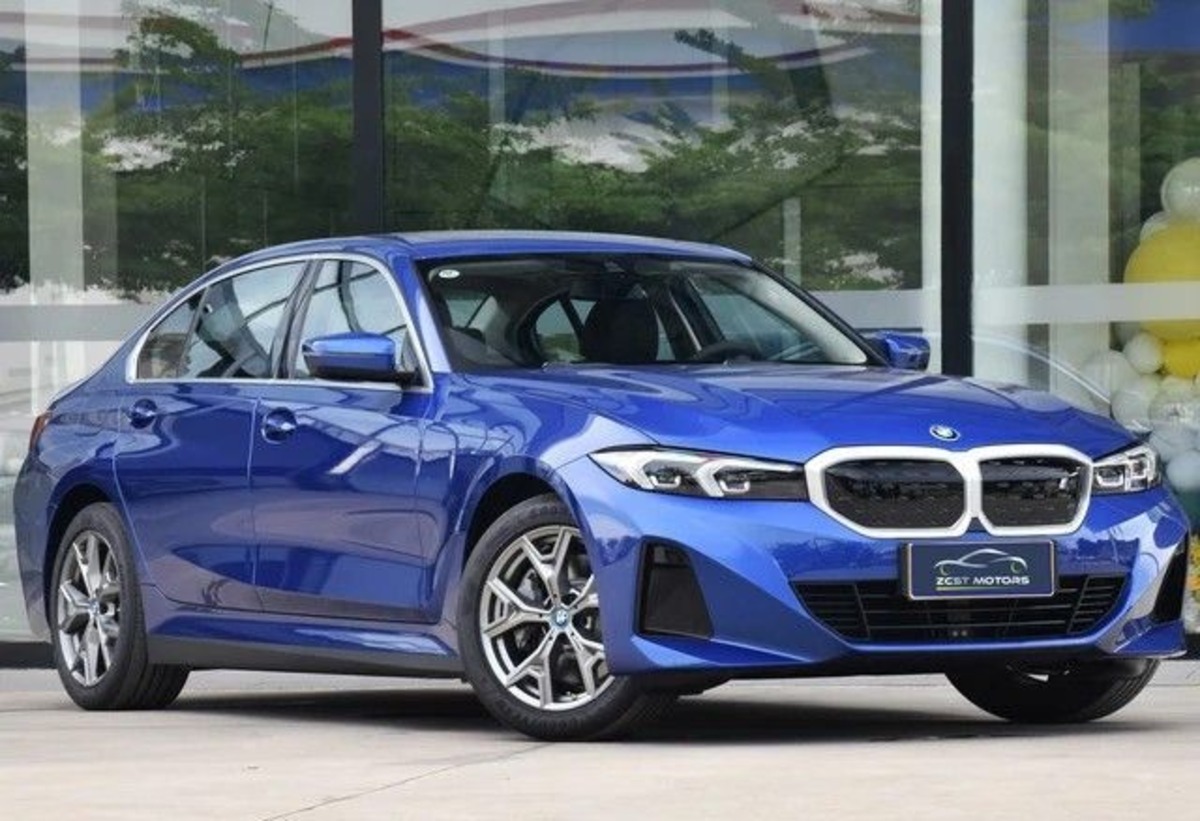
2. BMW i3
The BMW i3 has been praised for its urban-focused design and agility, but has significant drawbacks in cold winter conditions. One major limitation is its lack of active battery thermal management.
The battery pack is exposed to the cold, and since the i3 does not have a system to actively heat or cool the battery, it loses charge quickly overnight when temperatures drop below freezing. This results in a significant reduction in available driving range each morning during winter.
The i3’s cabin heating system is based on resistive electric heaters, which demand high power from the battery when temperatures are low. This type of heating is less efficient than the heat pump systems used by newer EVs, causing the battery to drain faster while trying to maintain cabin comfort.
Users frequently report a noticeable decrease in driving range on cold days due to the combined effects of battery cooling and inefficient heating. Battery size is another factor limiting winter performance. The i3’s relatively small battery pack means there is less stored energy available to compensate for cold-induced losses. This makes it less practical for drivers who require reliable range and heating in freezing conditions.
Additionally, many versions of the i3 lack remote preconditioning, preventing drivers from warming the battery and cabin prior to starting their trips. This limitation means every trip begins with a cold battery, which reduces efficiency and accelerates battery drain. The car’s limited insulation and compact design also mean cabin heat escapes quickly, increasing energy use.
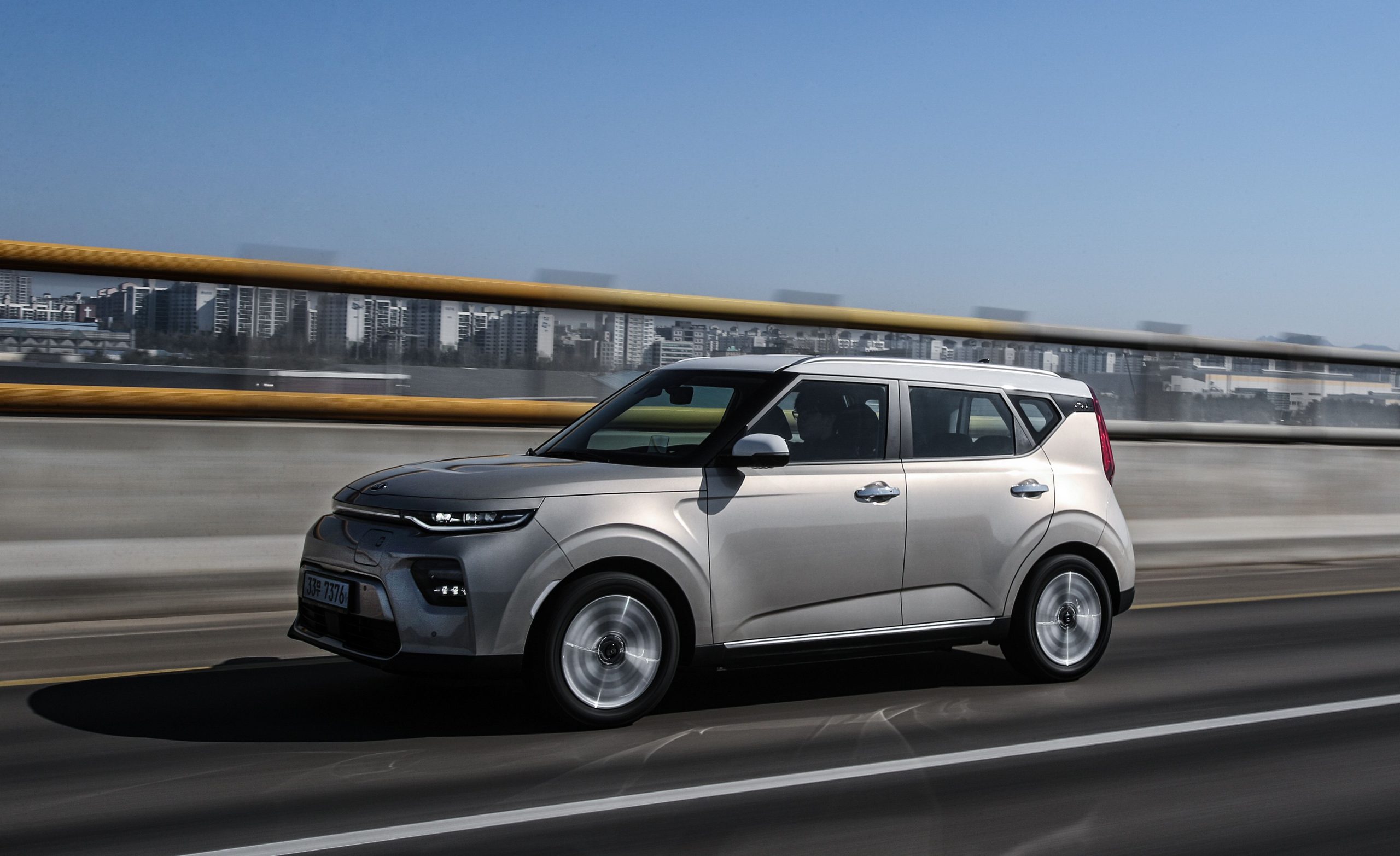
3. Kia Soul EV (First Generation)
The first-generation Kia Soul EV offers a spacious interior and affordable price point, but falls short in cold weather due to its lack of active battery thermal management.
Without an active system to heat the battery during cold nights, the battery temperature drops significantly, leading to reduced battery capacity and range by morning. This overnight cooling effect is one of the main reasons why drivers experience rapid battery drain in freezing temperatures.
The cabin heating relies on resistive electric heaters, which consume a significant portion of the battery’s energy during cold weather. This type of heating is less efficient and adds to the reduction in range during winter months. Drivers frequently note the need for more frequent charging in cold weather due to this combined battery and heating inefficiency.
Moreover, early Soul EV models often lack remote preconditioning features, which would allow warming the battery and cabin while the car is still plugged in. The absence of this option means drivers have to start their trips with cold batteries, which further increases energy consumption and reduces range.
The relatively small battery capacity also leaves little room for energy loss caused by cold weather. This makes the first-generation Soul EV less suitable for daily use in regions where temperatures regularly fall below freezing, unless the driver is prepared for range reductions and more frequent charging.
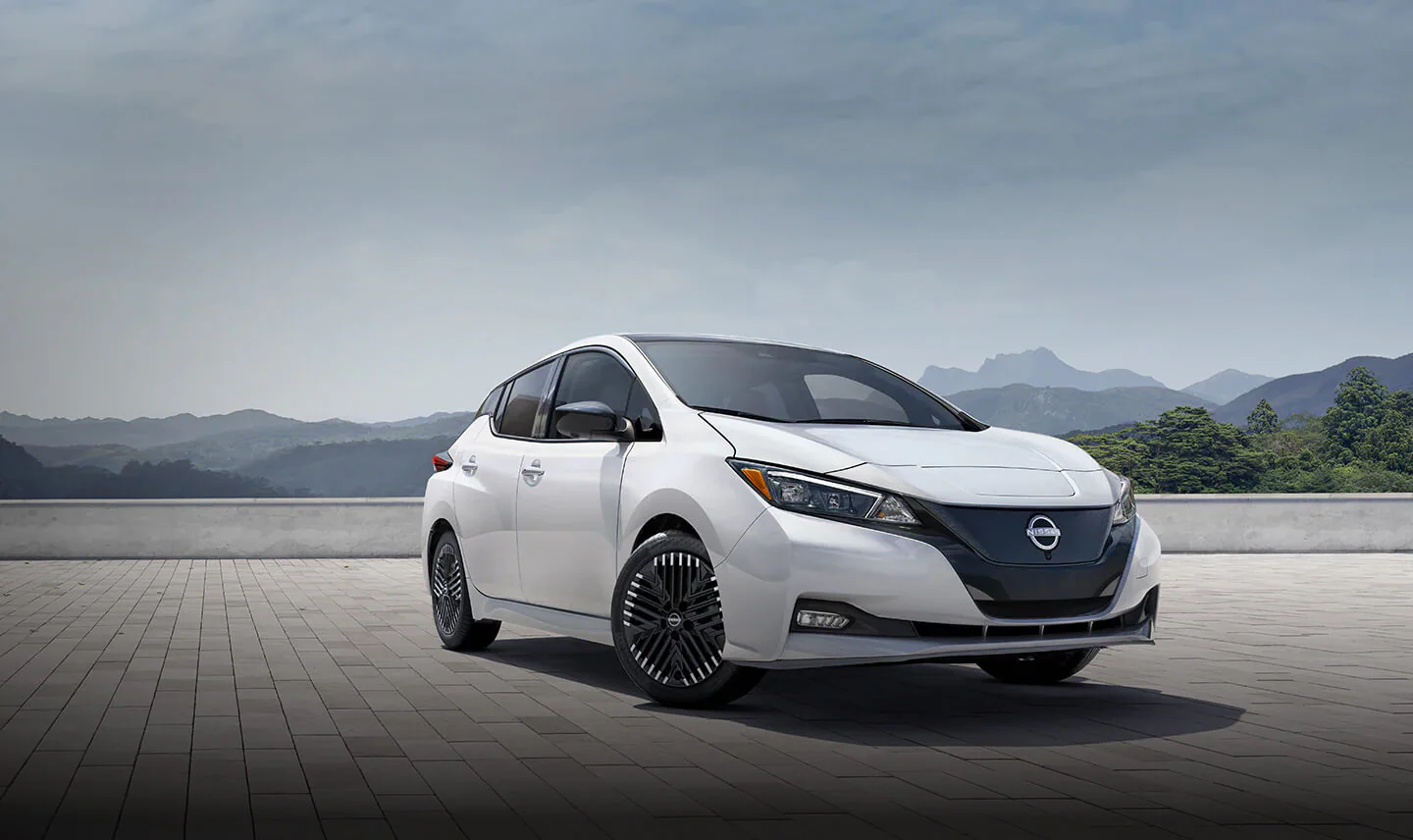
4. Nissan Leaf (Early Models)
The Nissan Leaf was one of the first mass-market electric vehicles and remains popular, but its early models have significant challenges in cold climates. One major issue is the lack of an active thermal management system for the battery pack. In cold weather, the battery cools down rapidly overnight, reducing its effective capacity and output, which results in substantial range loss by morning.
The Leaf’s cabin heating system in early models relies on resistive electric heaters, which draw heavily from the battery during cold weather. This heating method is less efficient and contributes to accelerated battery drain, reducing the total available driving range in winter conditions. Many owners have reported up to 30-40% range loss during cold spells.
The absence of remote preconditioning in these early Leafs means drivers cannot warm the battery or cabin before driving while plugged in. This cold start effect causes inefficient battery performance at trip start and increases energy consumption during initial driving.
Early Leaf models also have limited insulation and basic cabin heating designs, resulting in faster heat loss and increased energy requirements to maintain comfort. While newer Leaf Plus models have addressed many of these issues, the original Leaf struggles to maintain efficient battery use and heating during cold winters.
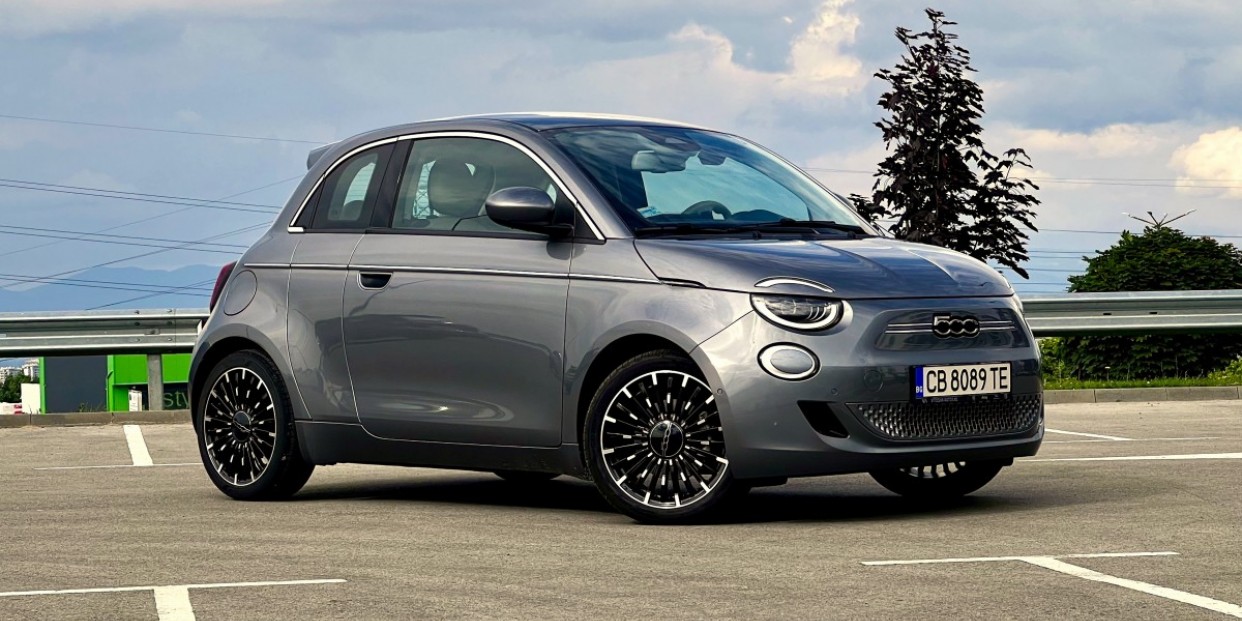
5. Fiat 500e
The Fiat 500e is a compact, stylish EV that offers city-friendly dimensions but performs poorly in cold weather due to the lack of an active battery thermal management system. Its battery cools down quickly when exposed to freezing overnight temperatures, leading to significant range loss and noticeable overnight drain.
Cabin heating in the 500e relies on resistive electric heaters, which consume substantial battery power during cold weather. This inefficient heating system, combined with limited battery thermal control, results in rapid energy depletion, especially during extended cold spells. Drivers report having to recharge more often in winter due to these energy losses.
The vehicle’s small size and battery capacity mean that it has limited energy reserves to handle the increased load from heating in winter. Additionally, the 500e’s cabin insulation is less robust than that of larger EVs, causing the interior to cool quickly and forcing the heater to run more frequently and draw more power.
Lack of remote preconditioning features further compounds these issues, leaving the battery and cabin cold before driving. For drivers in harsh winter climates, the Fiat 500e may not offer the reliability and range consistency needed for daily use.
Choosing the right electric vehicle for winter conditions is a critical decision for drivers living in colder climates. As the technology continues to evolve rapidly, understanding how different EV models cope with freezing temperatures can make a big difference in daily usability and peace of mind.
Batteries are at the heart of this challenge because they lose capacity and efficiency in cold weather, but vehicle design, thermal management systems, heating efficiency, and software features also play major roles in determining whether an EV can survive cold winters with minimal range loss or if it will suffer significant overnight drain.
The five EVs highlighted as survivors in cold conditions, such as the Tesla Model 3, Hyundai Kona Electric, Audi e-tron, Nissan Leaf Plus, and Volkswagen ID.4, demonstrate the benefits of active battery thermal management and efficient heat pump systems.
These vehicles maintain better battery temperature control, preserve driving range, and improve cabin comfort without excessive battery drain. Features like remote preconditioning enable owners to start their trips with warmed batteries and cabins, reducing the typical “cold start” penalties seen in winter.
Additionally, all-wheel-drive variants and strong insulation further enhance winter performance, allowing these EVs to function reliably even in the harshest climates.
On the other hand, early-generation models like the Chevrolet Bolt EV, BMW i3, Kia Soul EV, original Nissan Leaf, and Fiat 500e reveal the challenges of older battery technologies and less efficient heating systems. These vehicles lack active thermal management, rely on resistive cabin heaters, and often do not offer remote preconditioning.
As a result, they experience greater overnight battery drain and noticeable range reductions during cold weather. Their smaller battery packs provide less buffer for energy loss, forcing drivers to plan more frequent charging stops and endure range anxiety during winter months.
While these older or less-equipped EVs may still serve well in milder climates or shorter daily commutes, drivers living in regions with freezing winters should consider the benefits of investing in an EV with advanced cold-weather features.
Proper thermal management not only improves immediate driving range but also helps preserve battery longevity over time. Efficient heating systems reduce energy waste, making winter driving more comfortable and economical.
In conclusion, winter performance should be a key consideration for anyone purchasing an electric vehicle today. By selecting models designed to handle cold temperatures effectively, drivers can enjoy the many benefits of electric mobility year-round without the stress of unexpected range loss or overnight battery drain.
As the EV market continues to grow and technology advances, we can expect even better solutions for cold-weather driving in the future. Until then, understanding the strengths and weaknesses of current EVs in winter conditions is essential for making smart choices that fit both lifestyle and climate needs.

